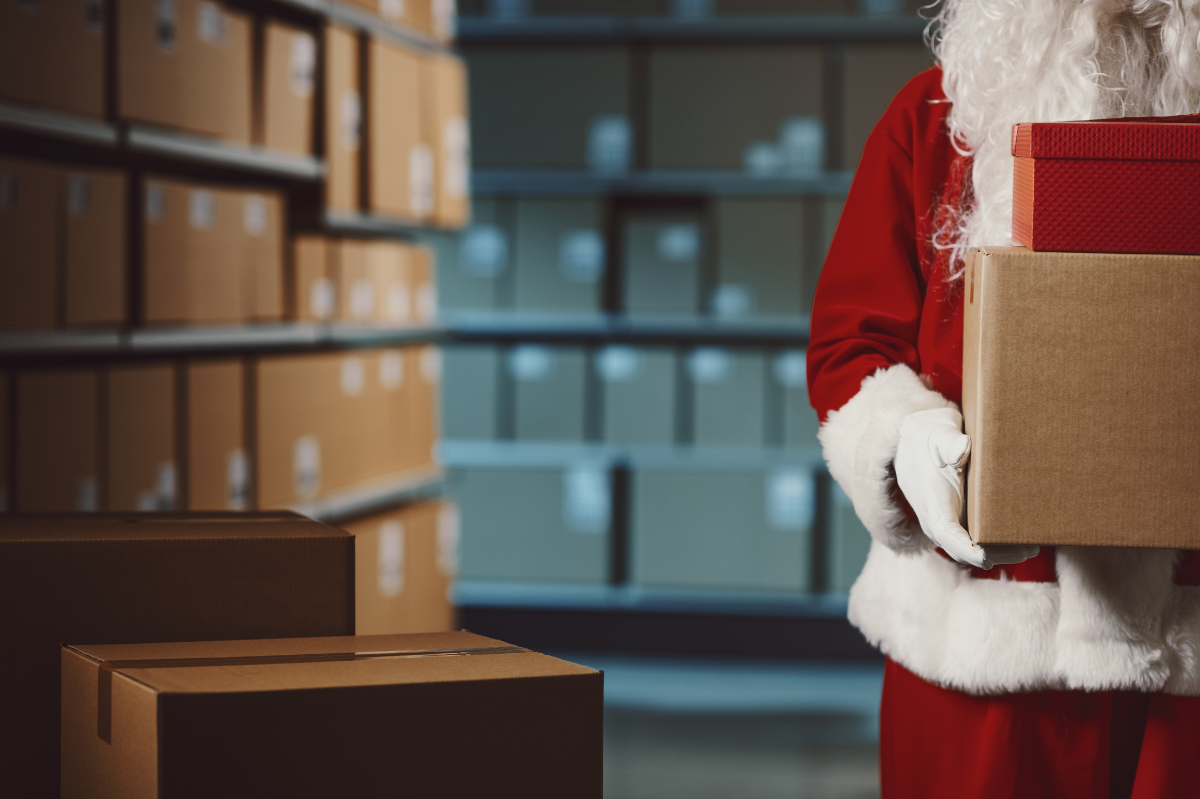As Black Friday approaches, most ecommerce teams are knee-deep in campaign planning and demand forecasts. Major retailers drive Black Friday promotions and sales events globally, setting the tone for the scale of the event. But ask any seasoned operator what keeps them up at night, and the answer won’t be CPMs or email open rates, it’s whether the warehouse can actually keep up.
For mid-market and enterprise brands, peak season success is determined not by how much demand you can generate, but by how well your shipping infrastructure absorbs it. Thanksgiving weekend marks the kickoff to the holiday shopping surge, setting the stage for subsequent online and offline sales peaks. Brands that scale profitably during high-volume periods have resilient, flexible systems that adapt quickly under pressure.
At VESYL, we’ve helped fast-growing ecommerce companies scale fulfillment operations by 3x, 5x, without downtime, backlogs, or blown SLAs. The Black Friday shopping period now often extends beyond a single day, lasting for a full week or more. In this post, we’ll share the technical and operational questions smart logistics leaders are asking before Black Friday hits.
What Is a Shipping Stack
Your shipping stack isn’t just your label printer and WMS. It’s the entire orchestration layer that sits between order placement and final delivery:
- Order ingestion (retailer feeds, DTC, B2B, marketplace feeds)
- Shipping software for carrier routing and label generation
- Rate engines and rule-based automations
- Multi-warehouse logic
- Inventory syncing across nodes
- Carrier APIs and fallback logic
- Notification and tracking infrastructure
At 500 orders/day, most brands can brute-force their way through inefficiencies. At 2,500+/day during Black Friday? You need systems that auto-scale, self-heal, and integrate across every fulfillment touchpoint.
Where Most Shipping Stacks Fail During Peak Volume
- Slow carrier API response times throttle label generation queues
- One-size-fits-all rate logic doesn’t adapt to zone surcharges or delivery timeframes
- OMS/WMS sync delays result in stockouts or duplicate shipments, impacting both online and physical stores during high-traffic events
- Inability to prioritize orders dynamically (e.g., expedited over standard)
- Lack of visibility into in-transit exceptions kills proactive support
- Manual exception handling floods your CX team with WISMO tickets
5 High-Leverage Audits to Run Before Black Friday
1. Are You Truly Multi-Carrier Or Just Multi-Label?
A real multi-carrier setup doesn’t just offer UPS, FedEx, and USPS labels—it makes intelligent decisions per order, per zone, per service level. VESYL clients using our dynamic rate shopping engine to save more every shipment by automating selection based on dimensional weight, transit guarantees, and cost thresholds.
Pro tip: Test whether your system re-routes dynamically when a preferred carrier is at capacity or delayed. If not, you’re not multi-carrier—you’re multi-risk.
2. What’s the Label Throughput Ceiling of Your Tech Stack?
Most ecommerce brands have no idea how many labels they can reliably generate per minute at peak. Labeling is a downstream bottleneck: if you can’t print fast, nothing moves.
Use stress-testing tools or simulate a sale event (BlazeMeter, Locust, WebLOAD, etc.) to evaluate batch print times and queue failures. Exclusive one-day sales can create sudden spikes in order volume, so it's essential to test your throughput to ensure you can handle these high-demand events.
3. Is Your Automation Engine Built for Decision Trees, or Decision Depth?
For example, rules like “if weight < 1 lb, use USPS First Class” don’t cut it at enterprise scale. You need multi-variable logic that evaluates:
- Delivery zone vs. warehouse location
- Carrier performance history by lane
- Box size vs. DIM weight
- Cutoff time vs. SLA guarantee
- Customer tier or promo eligibility
Optimizing your automation logic can streamline the purchase process for customers during high-traffic sales events, making it easier for them to complete purchases quickly and efficiently.
VESYL takes the manual work out of shipping. From rate shopping to packaging, all aspects of fulfillment are handled.
4. Do You Have a Real-Time Ops Dashboard or Just a Daily Report?
If your team finds out about issues through customer service tickets or warehouse Slack threads, you’re already too late.
Invest in real-time fulfillment observability:
- Label failures by carrier or service
- Pick-pack velocity by team
- Order aging and bottlenecks
- In-transit delays and exception tags
Dashboards like VESYL’s bring all of this into one view, so your ops leads aren’t operating blind at the most critical time of year. Having a dedicated account for each ops lead ensures secure access to real-time fulfillment data.
5. Can You Flex Fulfillment Footprint in <48 Hours?
Top brands aren’t just running one fulfillment model—they’re orchestrating multiple options:
- Owned warehouses
- 3PL overflow partners
- Dropship vendors for long-tail SKUs
- Retail store backrooms as micro-fulfillment nodes
To make this work, your shipping needs to support location-based routing, SLA-aware logic, and easy integration with new fulfillment partners. Merchants of all types, from 3PLs to dropship vendors, need to be integrated into a flexible shipping stack.
Inventory and Carrier Planning: More Than Just Replenishment
How Brands Manage Inventory Risk During Peak Season
Successful brands are:
- Forecasting by SKU, warehouse, and channel
- Planning inventory to cover several weeks of elevated demand during the holiday season
- Buffering high-margin items with expedited replenishment SLAs
- Segmenting high-risk SKUs into smaller, geographically distributed batches
- Allocating fast-movers to zones with the cheapest 2-day options
Optimizing Your Website for Conversions
During the holiday shopping season, your website becomes the front line for capturing the surge in online shopping. As Black Friday approaches, it’s essential to ensure your website is optimized for conversions and can handle the influx of shoppers looking for the best Black Friday deals. A seamless user experience from browsing to checkout, can make the difference between a record-breaking sales day and a missed opportunity.
Start by stress-testing your website’s infrastructure to ensure it can handle high traffic without slowdowns or crashes. Streamline your checkout process to minimize friction, making it easy for customers to complete their purchases quickly. Highlight fast and free shipping options prominently, as these are proven to increase conversion rates during the holiday shopping season.
By focusing on a smooth, reliable online shopping experience, you’ll be well-positioned to capture more sales and maximize the impact of your Black Friday promotions.
Ensuring Your Checkout and Shipping Options Scale with Demand
To remain competitive during Black Friday, your checkout and shipping options must be ready to scale with the spike in demand. Many retailers see a significant increase in average order value and more sales when they offer a variety of shipping options, including expedited and same-day delivery. Clearly display shipping costs and estimated delivery times at checkout to build trust and reduce cart abandonment.
Offering fast and free shipping is a powerful incentive, many retailers use it as a key part of their Black Friday strategy to drive higher average order values. Make sure your shipping options are flexible and can adapt to increased order volume, so customers receive their packages on time. By optimizing your checkout process and delivery options, you’ll not only boost customer satisfaction but also increase your chances of capturing more sales during the busiest shopping days of the year.
Creating an Exceptional Customer Experience
An exceptional customer experience is the cornerstone of success during the holiday shopping season. With online sales reaching new heights, shoppers expect more than just great deals, they want a smooth, personalized journey from start to finish. This means offering special promotions, exclusive discounts, and limited-time deals that make your brand stand out during Black Friday and beyond.
Invest in responsive customer service to quickly address questions or concerns, and make sure your website is easy to navigate. Highlight your best deals and promotions on your homepage and throughout the shopping process to keep customers engaged.
By focusing on both the sales and service aspects of your online business, you’ll create a memorable experience that encourages repeat purchases and positive word-of-mouth during the most competitive time of year.
Black Friday Shipping Cost Management Tactics That Actually Work
At VESYL, we don’t recommend gimmicks like “slow shipping discounts” unless they’re tied to measurable behavior. Instead, we guide brands toward strategies that reduce cost without sacrificing control. These tactics help brands and online retailers save money, achieve major savings, and maximize profits during holiday sales by optimizing how products are shipped and delivered:
- Use regional carriers in dense DMAs (OnTrac, LSO, LaserShip) to beat national rate cards
- Automate packaging selection to reduce dimensional weight charges and ensure packages are shipped efficiently to save both time and money
- Pre-configure thresholds for rate shopping (e.g., select cheapest option under 3-day delivery), comparing prices across carriers can lead to significant savings
- Negotiate peak season volume tiers with carriers in advance to help brands ship more orders on time during peak periods
If you’re offering free shipping, use it to drive AOV, tie thresholds to your margin model, not arbitrary round numbers. These approaches help unlock major savings and ensure your money is spent wisely during the busiest holiday sales periods.
Managing Peak Season Returns and Refunds
Returns and refunds are an inevitable part of the holiday shopping season, especially with the surge in online sales. To maintain customer trust and satisfaction, it’s essential to have a clear, hassle-free returns process in place. Clearly communicate your return policies on your website and at checkout, making it easy for shoppers to understand how to initiate a return or request a refund.
Efficiently processing returns and refunds not only improves the customer experience but also helps you manage inventory and sales more effectively during the busiest shopping days.
By prioritizing transparency and convenience, you’ll build loyalty and encourage customers to shop with confidence throughout the holiday season.
Final Thoughts: The Future of Fulfillment Is Resilient, Not Reactive
Black Friday is no longer a test of demand, it’s a test of delivery. Finally, after months of preparation, retailers face the ultimate challenge of Black Friday sales, where every detail matters. Brands that win in Q4 are those that treat fulfillment like a growth driver, not an afterthought. That means investing in systems that adapt, surface insights, and scale, without manual intervention. At VESYL, we’re building the connective tissue between inventory, carriers, software, and warehouse operations, so your business doesn’t break when the volume spikes.
Plan now. Test early. And build your shipping stack to scale on your terms.
Related Topics
Learn how VESYL can save you money on shipping
Not sure which plan suits you best? Have questions about our software? Contact our sales team for expert guidance.
.png)






.png)